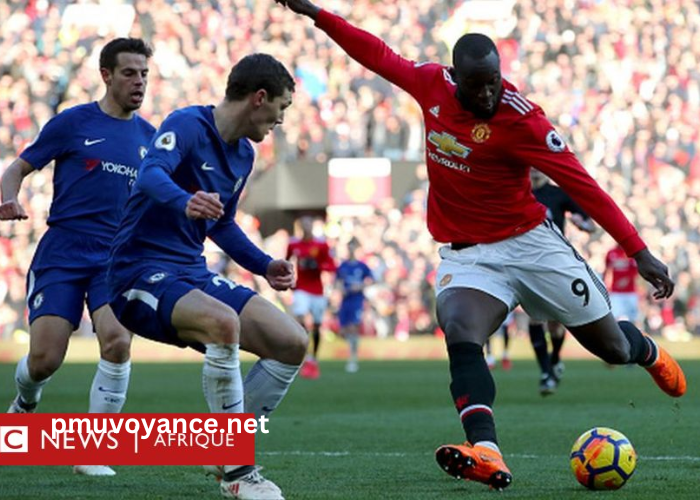The Premier League, the pinnacle of English football, captivates millions of fans around the globe with its high-octane matches, star-studded teams, and dramatic twists. One of the key aspects that drives the excitement and competitiveness of the league is its standings, or “classement Premier League.” The standings are not just a list of teams ranked by points; they reflect the dynamic nature of the season, the strategic decisions of managers, and the performances of players.
Understanding the Premier League Standings
The Premier League standings provide a snapshot of the current status of each team in the league. Teams are ranked based on their total points accumulated through wins, draws, and losses. A win provides three points, a draw earns one point, and a loss yields no points. This straightforward points system creates a competitive environment where each match can significantly impact a team’s position.
The standings also include crucial metrics such as goal difference, goals scored, and goals conceded. Goal difference, which is the difference between the number of goals scored and conceded, often plays a decisive role in determining rankings when teams are tied on points. This additional layer of detail adds to the drama and intensity of the league, as goal difference can be the deciding factor in crucial moments of the season.
The Role of the Premier League Standings in Shaping the Season
The standings are a crucial aspect of the Premier League season, influencing various elements of the competition. For teams, being at the top of the standings is the ultimate goal, as it represents success and positions them as potential champions. The top teams vie for the prestigious title of Premier League champions, a title that brings not only glory but also significant financial rewards and a place in the UEFA Champions League.
For clubs in the middle of the table, the standings reflect their performance and aspirations. Teams in this bracket aim to secure a place in European competitions, such as the Europa League or the newly formed Europa Conference League. Achieving a high enough position ensures participation in these prestigious tournaments, which can boost a club’s revenue and global profile.
At the bottom of the standings, the focus shifts to avoiding relegation. The three teams that finish at the bottom of the table face relegation to the English Football League (EFL) Championship. Relegation has significant financial implications and can impact a club’s long-term prospects, making survival in the Premier League a top priority for lower-ranked teams.
How the Standings Influence Team Strategies and Fan Engagement
The Premier League standings have a profound impact on team strategies and fan engagement throughout the season. For managers, the standings dictate their approach to matches, squad selection, and tactical decisions. Teams at the top of the table often have the luxury of playing with a more attacking mindset, aiming to consolidate their position and secure the title. Conversely, teams struggling near the bottom must adopt defensive strategies and make tactical adjustments to avoid relegation.
The standings also play a crucial role in shaping fan engagement. For supporters, the position of their team in the standings is a source of pride and excitement. A climb up the table can generate a surge of optimism, while a drop can lead to frustration and calls for change. Fans closely monitor the standings, as they reflect their team’s fortunes and influence their expectations for the rest of the season.
The Influence of Key Matches on the Standings
Throughout the Premier League season, certain matches carry significant weight in shaping the standings. High-profile clashes between title contenders, mid-table teams battling for European spots, and relegation six-pointers can have a major impact on the league table. These key matches often determine the trajectory of the season for the teams involved and can influence the overall standings in dramatic fashion.
Title-deciding matches, particularly those between teams competing for the championship, are closely watched and can swing the balance of power in the league. Similarly, matches involving teams at the bottom of the table fighting for survival are crucial, as they can directly affect which teams face relegation and which secure their place in the Premier League for another season.
The Impact of Transfers and Injuries on the Standings
The Premier League standings are not static; they are influenced by a variety of factors throughout the season. Transfers, both in and out of clubs, can have a significant impact on team performance and, consequently, their position in the standings. High-profile signings can bolster a team’s chances of success, while key departures can weaken a squad and affect their performance.
Injuries also play a crucial role in shaping the standings. The Premier League is known for its demanding schedule, and injuries to key players can disrupt a team’s form and affect their ability to compete. Managers must navigate these challenges by making tactical adjustments and relying on squad depth to maintain their position in the standings.
The Role of the Media and Analysis in the Premier League Standings
The media and analytical community play a vital role in shaping perceptions of the Premier League standings. Sports analysts, pundits, and journalists provide in-depth analysis and commentary on the standings, offering insights into team performance, tactical changes, and potential outcomes. This media coverage helps fans and stakeholders understand the nuances of the standings and their implications for the season.
Analytical tools and statistical models are also increasingly used to evaluate team performance and predict future standings. Advanced metrics, such as expected goals (xG) and player performance statistics, provide a deeper understanding of team dynamics and can offer predictions on how the standings might evolve. These insights contribute to the broader narrative of the Premier League season and enhance the fan experience.
Historical Context and Records in the Premier League Standings
The Premier League standings are also a reflection of historical trends and records within the competition. Over the years, certain teams have dominated the league, setting records for points, goal difference, and consecutive titles. These historical benchmarks provide context for current standings and highlight the achievements of past and present teams.
Records such as the most points in a season, the largest winning margin, and the longest unbeaten runs are celebrated milestones in Premier League history. Understanding these historical achievements offers a broader perspective on the significance of current standings and the challenges faced by teams in their pursuit of success.
The Future of the Premier League Standings
As the Premier League continues to evolve, the impact and importance of the standings will remain central to the competition. Changes in broadcasting rights, financial structures, and international involvement are likely to influence the dynamics of the league and the way standings are perceived.
The introduction of new technologies and innovations in data analysis will further enhance the understanding of team performance and standings. Fans and analysts will continue to explore new ways to interpret and engage with the league table, ensuring that the Premier League remains a captivating and dynamic competition.
Conclusion
The Premier League standings, or “classement Premier League,” are more than just a ranking of teams. They are a reflection of the competitive nature of the league, influencing team strategies, fan engagement, and the broader narrative of the season. By understanding the factors that shape the standings and the impact they have on the competition, fans and stakeholders can fully appreciate the excitement and drama of English football’s premier league.



